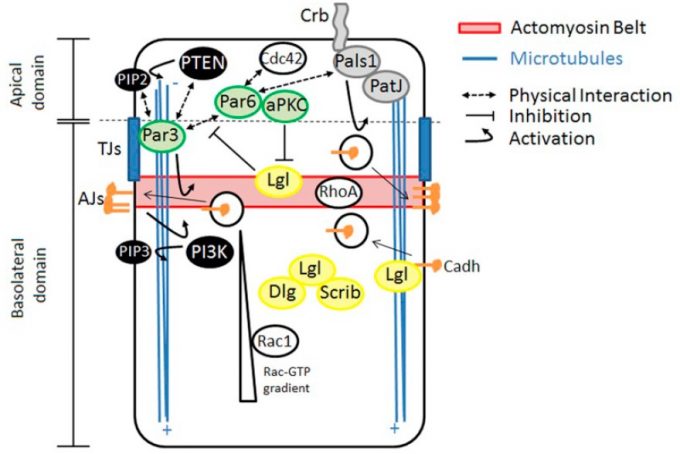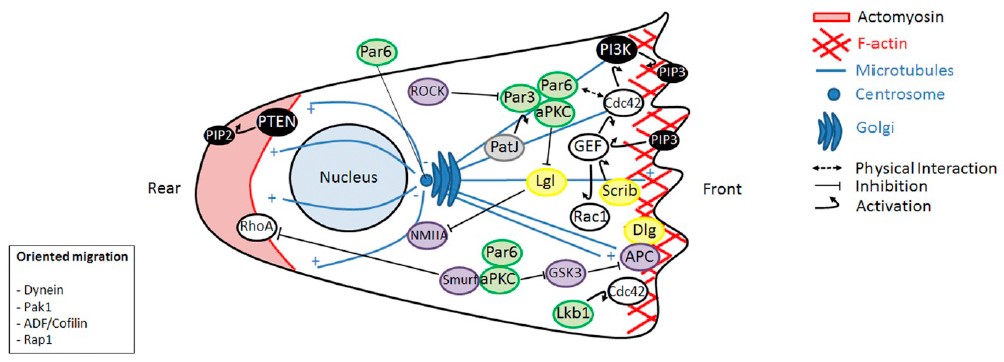
Logout
If you want to log out click in LogOut


Cell polarity refers to the intrinsic differences in the organization and distribution of cellular components within a cell. Understanding cell polarity is essential because it plays a central role in a wide range of biological phenomena, such as cell division, migration and tissue formation.
Cell polarity is a conserved process that is present in a wide range of organisms and plays a crucial role in various cellular and tissue functions. These functions include the initial establishment and subsequent maintenance of epithelial tissues, asymmetric cell division, cell motility, cell differentiation, morphogenetic movements, and tissue repair.
It is characterized by the asymmetric distribution of cellular proteins, membranes, organelles and processes within the cell. The regulation of this process is very important for cell function, and cells use various mechanisms to ensure appropriate abundance and activity of polarity determinants (1,2,,3,4).

Apico-basal polarity (epithelial cells). In mammalian epithelial cells, development of an apico-basal polarity
allows the organization of two well defined domains separated by tight junctions.

In slow migrating cells such as fibroblasts, astrocytes and epithelial cells, a polarized organization of intracellular molecules
and structures allow the formation and maintenance of a leading edge with membrane extensions and the retraction
of the rear of the cell. These regulations allow a sustained orientation of migration into the desired direction.
The localization and activity of polarity proteins is strongly regulated through kinases and phosphatases (2).
Polarity of cell is crucial during embryogenesis, and for maintenance of tissue architecture and homeostasis, wound healing, immune responses ...Scientists have revealed that defects in polarity of cell are associated with various diseases, including cancer and neurodegenerative disorders.
The polarity of cell is closely related to cell proliferation and growth. Accordingly, many cellular polarity determinants have suppressive or pro-oncogenic properties and have been reported to be poorly regulated in a variety of different tumors, particularly those of epithelial origin (2,4).You can custom your own SignArrays® with the genes of interest of your choice, according to your project, you just have to download and complete our Personalized SignArrays® information file and send it at contact@anygenes.com